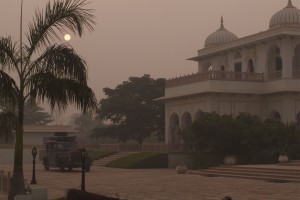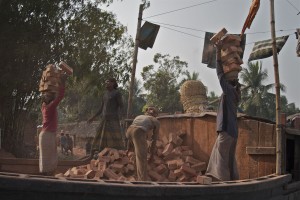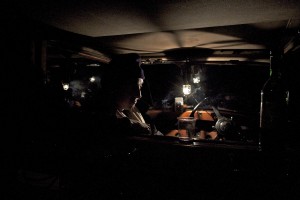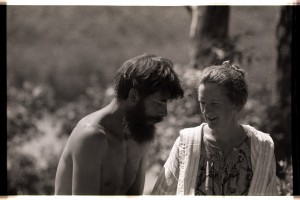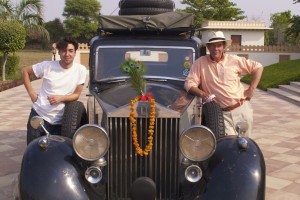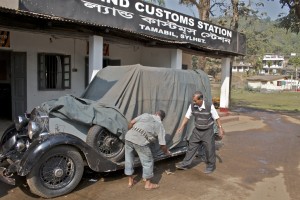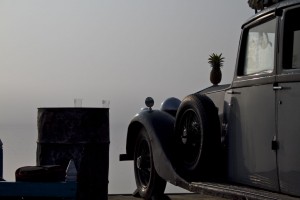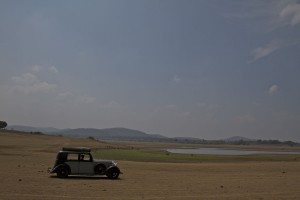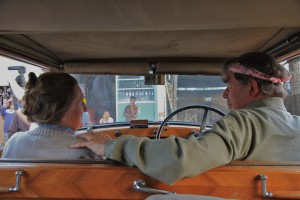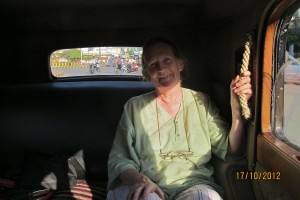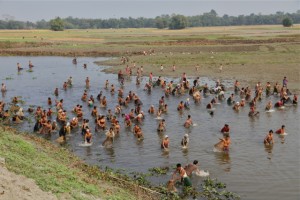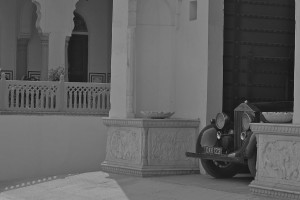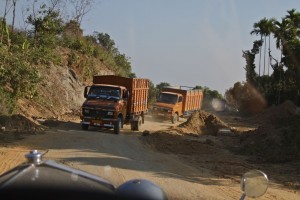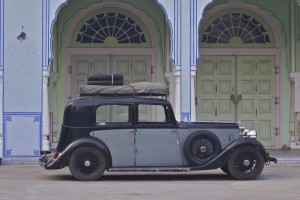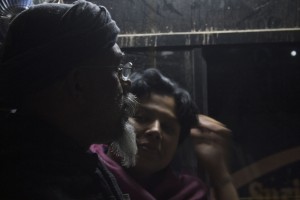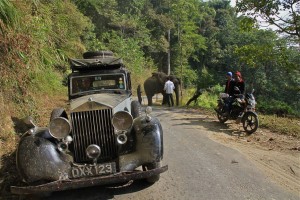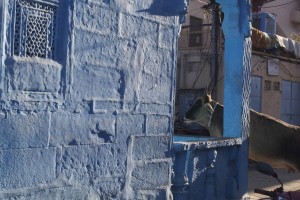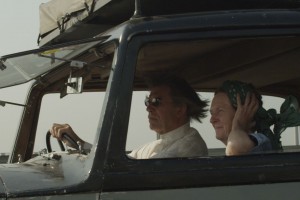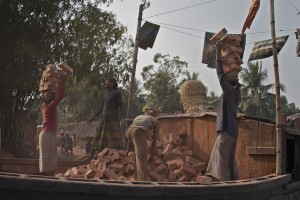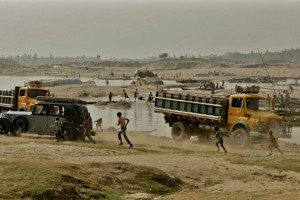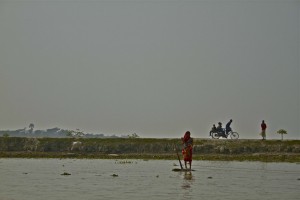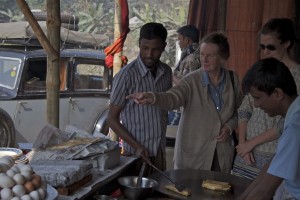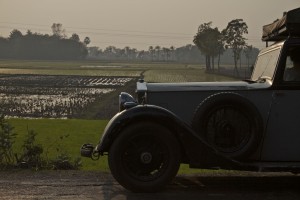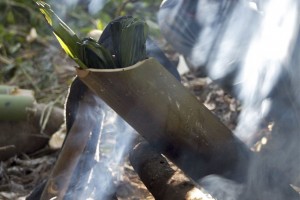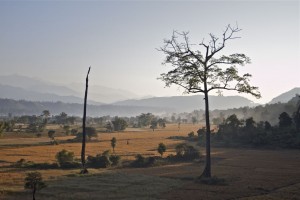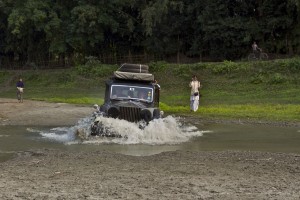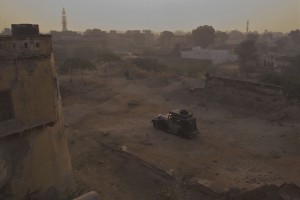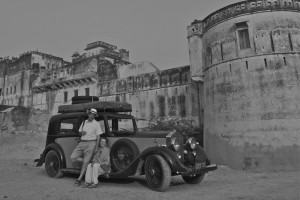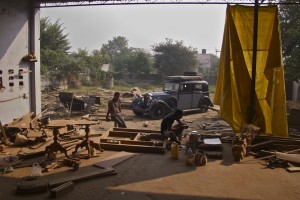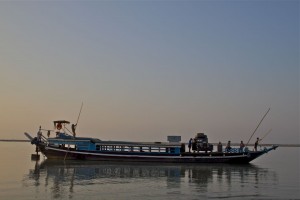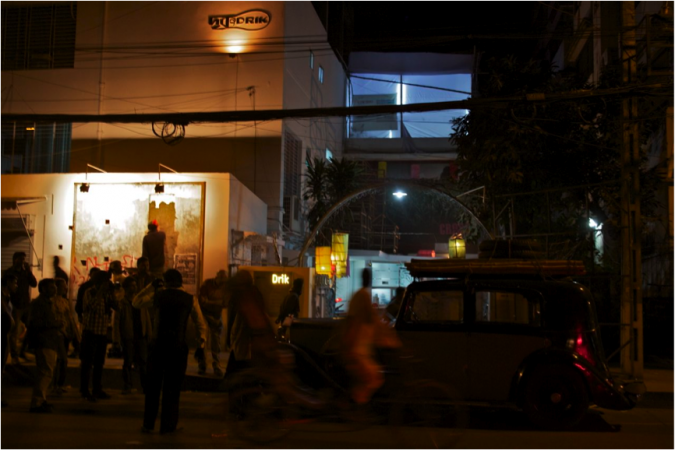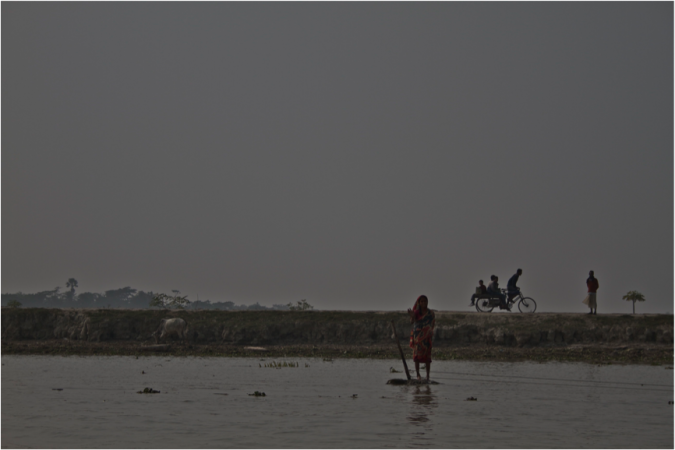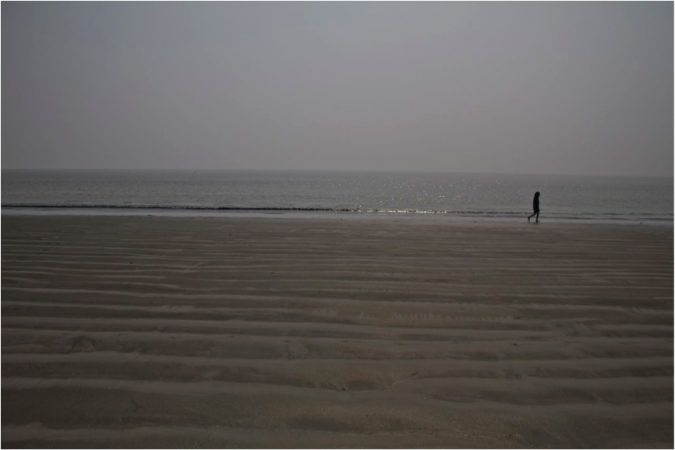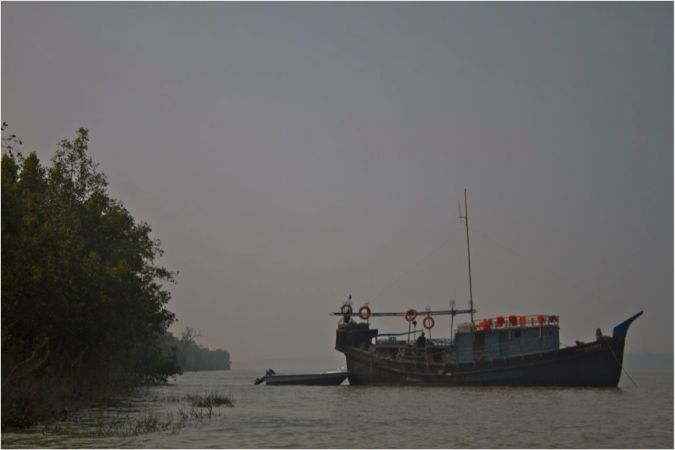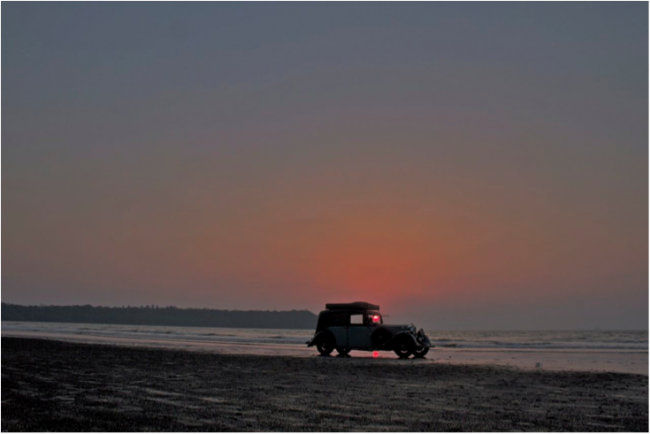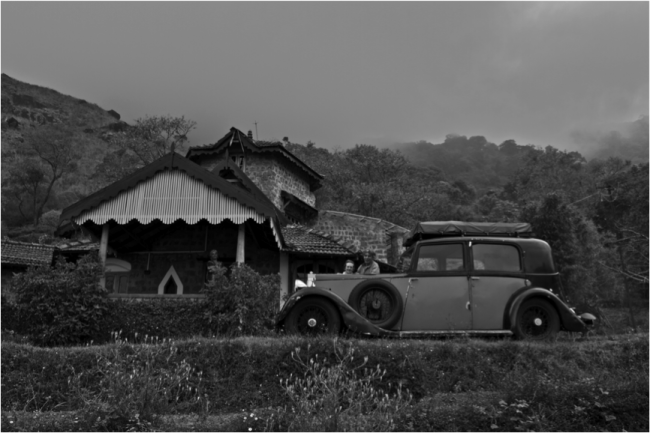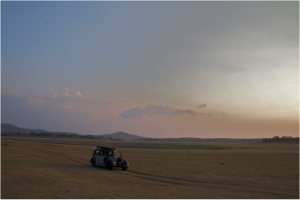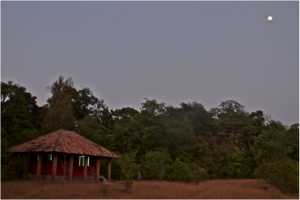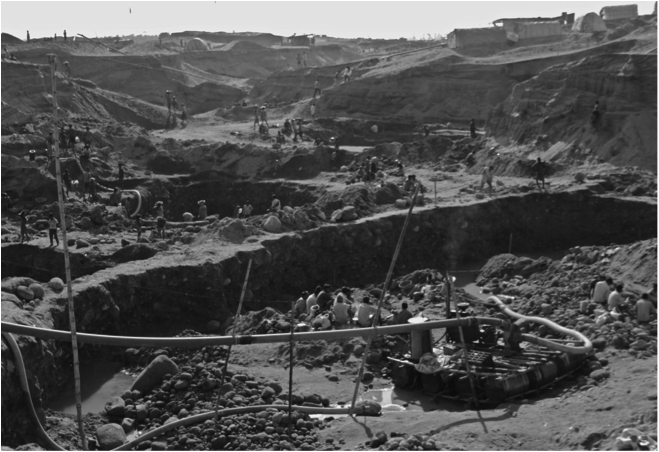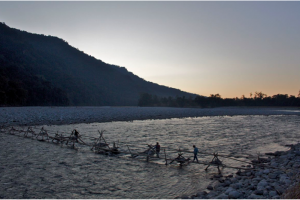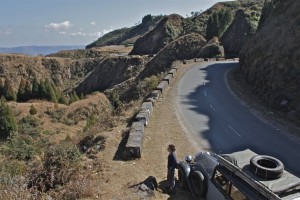This page contains photographs of our journey across India, 5 letters we posted during 6 months on the road and some video footage made by Oliver McGarvey, a documentary film-maker. The black and white negatives have yet to be edited.
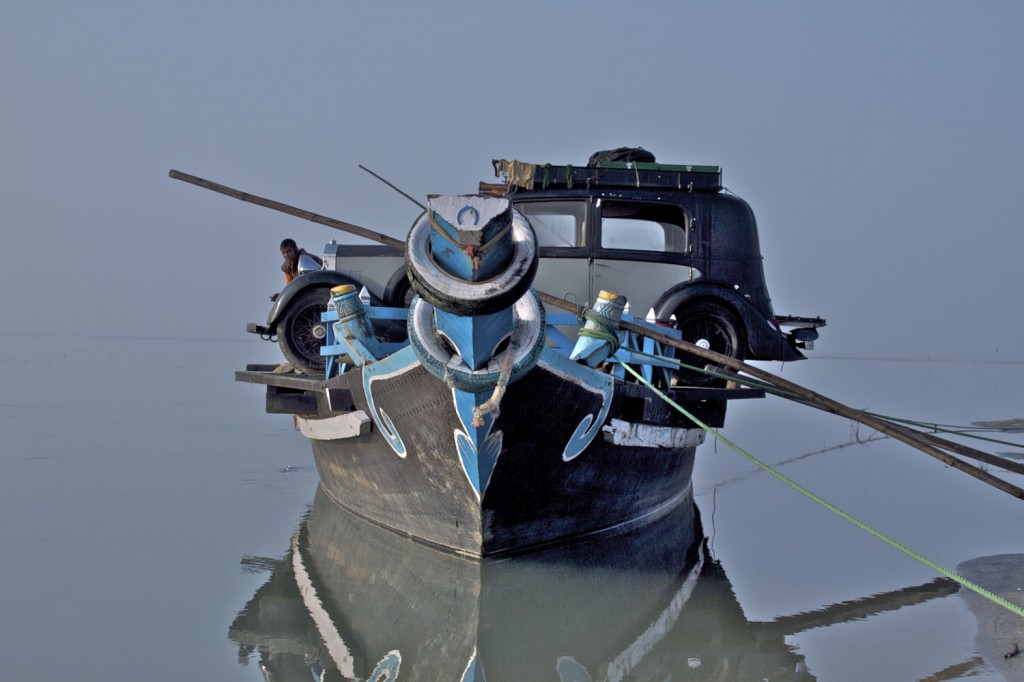
Long car wedged with rocks on a narrow boat, motoring uptream on the Brahmaputra River towards China.
- Occasionally we stayed in palaces. The Raja of Bharatpur, who owned this one, told us his uncle bought 12 Rolls Royces when he visited London in the ‘30s. He turned 2 of them into garbage-trucks, which upset Rolls Royce Ltd no end. We also stayed in some pretty dreadful hotels, where the rooms were lit by dim electric lights and stank of stale cigarettes.
- These bricks weigh about 6 lbs (2.7 kilos). The men carry 20 bricks in a load, well in excess of 50 kilos. That they keep their balance as they bear them along narrow gang-planks from boat to boat and down to the riverbank is one of the many miracles of Bangladesh. There are about 10,000 brick kilns in Bangladesh. The dust and smoke they create is lethal. There is no other natural building
- A late-night session with Oliver in the Rolls. The boat was moored to the banks of the Brahmaputra, and the back of the Rolls became the drawing room. It was the only comfortable place on board.
- Jan & I in Assam in 1980
- Jan & I in Gauhati 32 years later, taken by Prabal Das for Assam News.
- 1st day of Divali, hence the garlands. Oliver and I in front of the palace at Bharahtpur.
- Drik (sanskrit for light) is the leading photo agency in Bangladesh, founded by Shahidul Alam in the early 90’s and now the nerve-centre of photography in Dhaka. Its courtyard is a gathering place, its coffee-house a talking shop and its walls the place aspiring photographers hope to hang their prints. He and other old friends were there to greet us in the warm Bangladeshi night.
- We were guests of honour at Chobi Mela. The opening was lively.
- We were refused entry into into Bangladesh. We had to go to Dhaka to get permission from the Minister of Finance. We covered the Rolls in canvas and left it on the road in front of the Customs house. We also hired six guards to watch it day & night. 3 weeks later, armed with a letter from the Minister, we returned to find it still there along with 6 smiling guards and the head of Customs. We tipped the guards well and drove on.
- Indian wine can be excellent. We drank our last bottle out of these cheap transparent cups as we motored up-stream. The pineapple was breakfast.
- As the heat of the Indian summer settled over the sub-continent we drove north, along winding roads through the Western Ghats until we reached Mumbai, where we had started 6 months before. We crossed this dried-up reservoir on the edge of Nagarhole National park to reach the place we stayed that night.
- On the road Jan was a 2nd pair of eyes and ears. The only altercations we had with other drivers – none particularly serious – were when she was sitting in the back.
- Always good-humoured, never stressed and with a sharp eye for arresting sights, impending danger and tempting tea-stalls, Jan is the best travelling companion imaginable.
- Rounding up fish in a tank in Majuli Island, Assam. They caught them by hand and stuffed them down the front of their dresses.
- The Rolls resting in the Haveli at Alsisar in Rajasthan. It had developed a troublesome cough as we skirted the Thar Desert. The Raja’s mechanic, who was 85, diagnosed adulterated petrol. We changed the spark plugs and carried on.
- Motoring in India is not for the faint-hearted. Traffic regulations are still in the idea stage save in the big cities. Our friends there were appalled that we proposed to drive our own car at all, let alone across India and back in a 1936 Rolls. They warned us strongly against driving across Uttar Pradesh and Bihar, where nobody speaks a word of English, there is no tourist infrastructure and dacoits and other kidnappers block the roads and extort money.
- These leviathans of the road are highly dangerous. Truck-drivers, often on drugs and with no hours-restrictions, think they own the road. The trouble is they do. Both sides of it. It is up to other drivers to honk like a maniac and get out of the way fast.
- The Rolls outside the doors of the Durbah Hall in the grounds of the Diggi Palace in Jaipur, where we stayed for a week.
- Rounding up fish in a tank in Majuli Island, Assam. They caught them by hand and stuffed them down the front of their dresses.
- Descending the Naga Hills along a narrow mountain road we met 2 mahouts and their elephants. They were hauling tree-trunks up a steep trail out of the forest and stacking them on the side of the road.
- Oliver was with us for much of the journey. He used the walnut veneered cocktail cabinets in the back of the Rolls as his editing suite.
- An urban cow in an indigo city. There are dozens of stories why old Jodhpur is painted this amazing colour some of which are plausible. The city is a dramatic sight in the early morning light of the Indian winter.
- One of the advantages an old Rolls has over a modern car is real ventilation. Not so good in winter, but in the heat of southern India you can open the bonnet vent and raise the windscreen. This was taken on the west coat of India near Mumbai, and the smell of the sea was borne on the wind as it flew through the car.
- India is another country. They do things differently there. Long cars get taken cross-wise on narrow boats. The rock wedges by the wheels are India’s nod to health and safety.
- Kids loved the Rolls, mainly because they could jump on the running boards. We anticipated this, and strengthened them before we left home. We also put steel catches inside the doors, so when they hung on to the door-handles the doors wouldn’t fly open. The background is a rock mine. Rocks in Bangladesh are rare as diamonds in Britain. 20,000 men women and children work here in the dry season. The pay is good. The mine, at the foot of the steep Megalayan Hills by the border with India, is under water during the monsoons. When the water recedes there is a fresh harvest of Indian rocks to build Bangladeshi roads: the ultimate in renewable resources.
- 40% of Bangladesh is under water during the monsoons. Tracks between villages are often on top of flood barriers. Rickshaws are the main form of transport. This is in the Sundarbans, the largest area of mangrove swamps in the world, about 30 miles from the Bay of Bengal.
- Jan organizing breakfast at a street-stall after we took a ferry across the Ganges. Chili omelette, roti and marsala tea as usual.
- The street stalls of the subcontinent are the hub of rural life: good food and the place to find out where things are and which road to take. Street-signs are rare and never in English. This was taken in Bangladesh, not far from the Bay of Bengal.
- In the new year we turned south and drove through Bangladesh to Bangalore and the Niliguri Hills. We stopped frequently as we travelled, to stretch our legs, investigate something which caught our eye – in this case the rice-padis – and check we were on the right road. We used google-maps, which worked in rural areas but was hopeless in towns.
- We baked rice, fish and vegetables in fresh-cut bamboo over an open fire during our walks in Namdapha.
- Namdapha, in the far north-east corner of India by its borders with China and Burma, is the least known and one of the largest National Parks in India. Visitors are rare. A special permit is required, which is a pain to get. There is only one guest-house in the Park, and it is falling down. Illegal logging is rife and poaching is endemic. But it remains one of the world’s richest pockets of biodiversity.
- This was a bad move. I drove across without bothering to check how deep the river was. It was over 2 feet. The Rolls stalled as she emerged the other side. Jan laughed, as did a number of on-lookers. I felt like an idiot. She came back to life after I dried the distributor. The chap in the background taking photographs turned out to be a monk doubling as a journalist. By the time they appeared in the local papers of Assam we were long gone.
- The view from the battlements of Mahansar Castle just after dawn. During this stage of the journey we started early to avoid the midday heat. Later, as winter settled over northern India, we covered our knees with blankets to keep warm. 1936 Rollses don’t have heaters.
- We stayed in this castle on the edge of the desert in eastern Rajasthan. It was built 400 years ago and hasn’t changed hands since. It is off the beaten track and not many tourists go there.
- Crossing the hot plains of Gujerat to Rajasthan the wooden frame of the Rolls shrank, and on the rough roads of the Thar Desert nuts unscrewed from their bolts. Parts fell off. I spent a day here working with the carpenters to fix the damage.
- Few boats ply the Bramaputra these days. Finding one wide enough for the Rolls was not easy. Eventually we met a film director who needed an English actor for a feature film about Assam’s colonial history. I did a day’s filming in exchange for getting his fixer to find a boat. He did, and we set off the next morning.
- We arrived to a warm welcome at Drik in Dhaka at 10 o’clock at night
- A flood barrier in the Sundarbans
- Jan walks along rippled sands by the Bay of Bengal
- FB Aysa in the Sundarbans
- By the Arabian Sea
- The house high in the Nilgiri Hills
- The darkening sky over the plains In Nagarhole
- Moonrise at the little house in the clearing at Agumbe
- The rock mine at Jaflong
- The Bamboo bridge in Namdapha
- Looking over Bangladesh from the summit of the Megalayan Hills.

